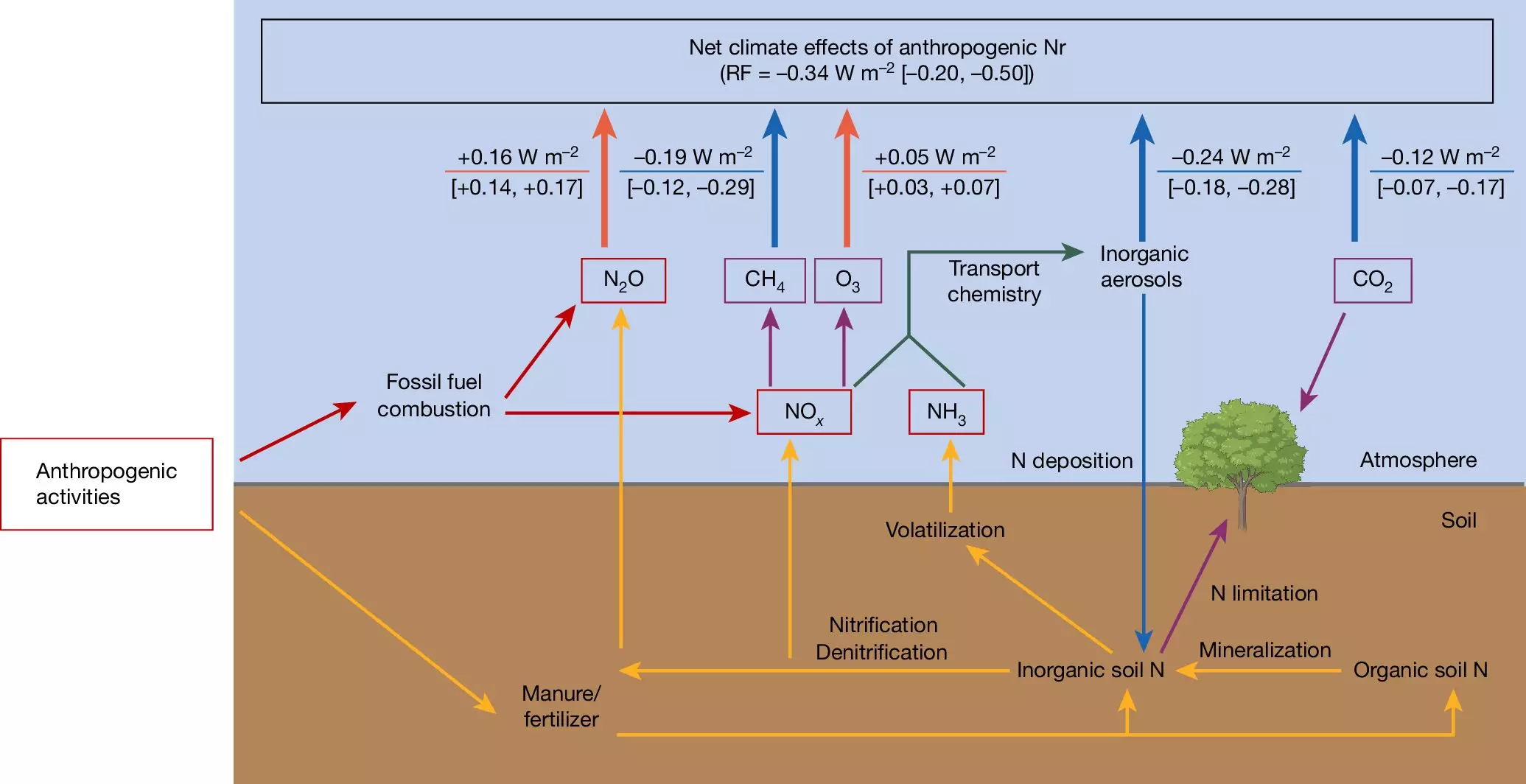Nitrogen is one of the most abundant elements on Earth, comprising roughly 78% of our atmosphere. Its role, however, spans far beyond mere composition; it is a potent agent of environmental change that reflects the duality of its impact on our planet. Recent revelations from an in-depth study led by the Max Planck Institute for Biogeochemistry have shed light on this complexity, revealing how nitrogen compounds can oscillate between causing warming and cooling effects in our climate systems. This dichotomy not only challenges misconceptions about nitrogen’s environmental role but also underscores an urgent need to reconsider our strategies in agriculture and industry.
The term “reactive nitrogen” refers to various nitrogen compounds, distinct from elemental nitrogen. While nitrogen gas is inert, other forms—such as nitrous oxide and nitrogen oxides—interact with our climate in complicated ways. The Max Planck research team meticulously examined these interactions and their resultant atmospheric effects. They concluded that while certain nitrogen compounds like nitrous oxide act as potent greenhouse gases, others can lead to a net cooling effect. This approach recognizes both the beneficial and detrimental potential of nitrogen, compelling us to rethink how we manage this crucial element.
The Paradox of Cooling and Warming
At first glance, the notion that nitrogen inputs into our environment could exert a cooling influence might seem counterintuitive, especially given the known contributions of compounds like nitrous oxide to climate change. Nitrous oxide is notably infamous for being nearly 300 times more efficient at trapping heat compared to carbon dioxide, persisting longer in the atmosphere and thus compounding its warming effects. Contradictorily, short-lifespan nitrogen oxides, mainly produced through fossil fuel combustion, can reflect sunlight and help cool the planet. This interplay between warming and cooling nitrogen compounds illustrates a complex picture rather than a linear narrative of environmental harm.
According to the research, reactive nitrogen’s overall effect has resulted in a net cooling of about -0.34 watts per square meter, contrasting sharply with the warming attributable to anthropogenic activities, which heats our atmosphere by approximately 2.7 watts per square meter. This critical finding points to the nuanced climate impacts of human-induced nitrogen emissions. It also conveys the essential truth that dealing in absolutes—categorizing nitrogen exclusively as a villain in climate change—ignores its multifaceted nature.
The Health and Biodiversity Trade-offs
While it is important to highlight the potential cooling effects of nitrogen, the broader implications of nitrogen emissions cannot be overlooked. Increased nitrogen levels often translate to over-fertilization, which threatens aquatic ecosystems, harms biodiversity, and poses significant health risks. For example, nitrogen run-off contributes to the creation of dead zones in oceans, while elevated nitrogen levels in drinking water can lead to serious health complications for humans.
The study’s lead author, Sönke Zaehle, emphasizes that our existing relationship with nitrogen must shift; improvements in agricultural practices could vastly enhance nitrogen use efficiency, ultimately curtailing harmful emissions. It is critical to remember, however, that efforts to mitigate nitrogen input are intrinsically linked to broader climate strategies, especially in conjunction with strategies aimed at reducing greenhouse gas emissions.
Redefining Future Agricultural Practices
The framework presented in the Max Planck Institute study strongly advocates for a comprehensive reevaluation of agricultural norms. Enhancing our understanding of how to optimize nitrogen as a fertilizer without leading to adverse side effects will be essential. Farmers can adopt advanced techniques such as precision agriculture, which utilizes data to apply fertilizer more effectively and in smaller amounts, reducing the risks associated with over-fertilization and the consequent negative environmental toll.
The pressing reality of diminishing biodiversity and increasing public health concerns compels us to rethink our nitrogen management strategies. As Zaehle noted, there is a critical need to balance the benefits of nitrogen use in crop production with its various environmental impacts. This will undoubtedly require interdisciplinary collaboration among ecologists, farmers, policymakers, and scientists.
The Bigger Picture of Greenhouse Gas Mitigation
Acknowledging the complex role of nitrogen and actively managing its compounds would greatly aid in our efforts against climate change. While nitrogen can indeed cool the climate through several pathways, the need for a holistic approach to addressing climate change remains paramount. As we push for a sustainable future, we must strive for concrete action that addresses not just nitrogen emissions, but also the wider spectrum of greenhouse gases, especially carbon dioxide and methane from fossil fuels.
As science advances and understanding deepens, it is vital to maintain a nuanced view of climate influences. The findings from the Max Planck Institute open new avenues for research and discussion on nitrogen’s role in climate dynamics, prompting a reexamination of our approaches to agriculture and broader environmental policy. Instead of viewing nitrogen emissions solely through a lens of public health and environmental degradation, we should embrace a more complex perspective that recognizes both its challenges and its potential for creating a sustainable agricultural economy.

